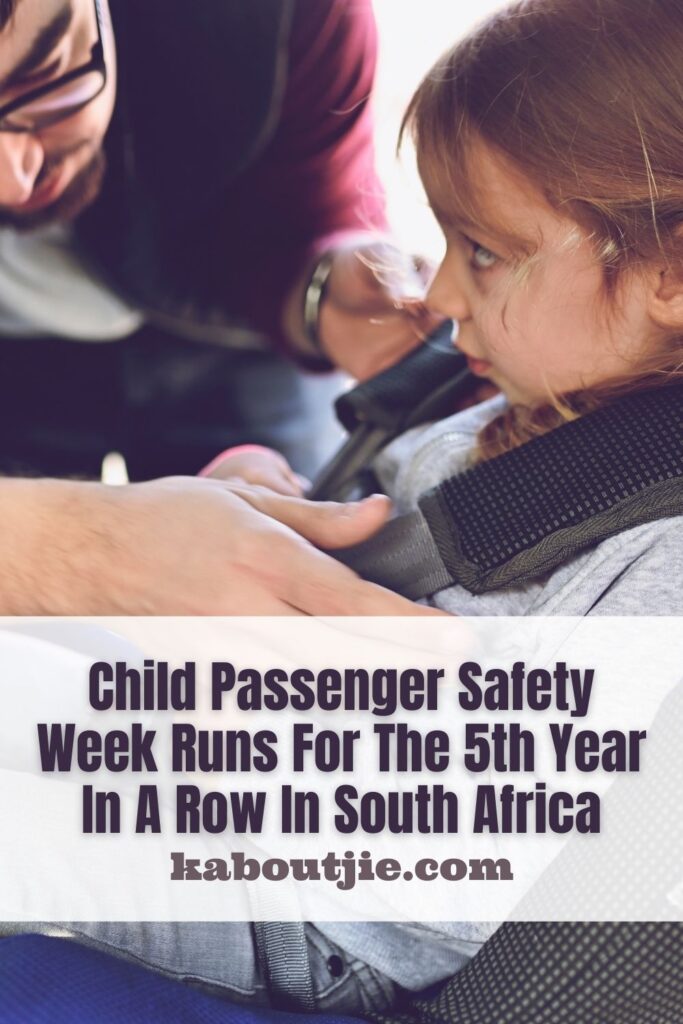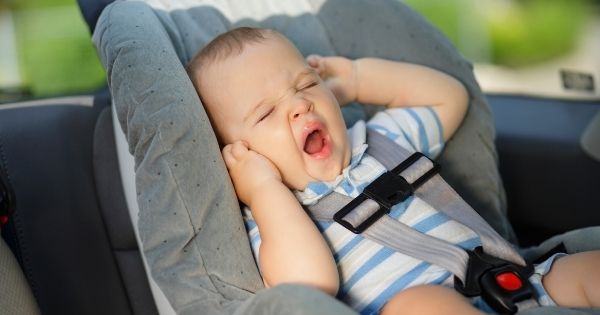Despite constant progress in terms of vehicle safety, road traffic accidents still represent the number one causes of fatalities amongst children under the age of 10.
Regardless of it being law that every child under the age of 3 be securely strapped into a car seat, a shocking 93% of motorists, taxi and bus services flaunt this law, which is not effectively enforced by local and national police. The majority of injuries, through car accidents, are due to a complete lack of any kind of child safety restraint.

“Child Passenger Safety week runs internationally from the 19th to the 25th of September, and we at Maxi-Cosi really want to get people talking about the importance of our children’s safety in motor vehicles in South Africa.,” says Debbie Billson, Operations Director for Maxi-Cosi, who have been the driving force behind Child Passenger Safety Week since its inception 5 years ago in SA.
“We want to educate and inform South African road users of the dangers of travelling on our roads with children who are not securely strapped into a car seat, as well as ensuring the car seat they use has undergone the minimum crash testing required. Strapping our children into a well secured car seat needs to become something every single one of us do, no matter how short a car trip we are doing!”
An adult holding a child in their arms provides absolutely no protection in the event of an accident. In a crash at a speed of 50 km/h, body weight is increased by around 30 times. For example, a child weighing approximately 30 kg turns into a projectile weighing a ton. At the point of impact, no-one is capable of restraining them. The strength of the impact is equal to falling 3 stories.
A recent study conducted by Arrive Alive found that seatbelt usage is much lower in Central Business Districts in South Africa, suggesting that road users believe that in low speed environments a seat belt is unimportant! While at the same time the Red Cross Memorial Hospital treats an average of 20 child passengers every month as a result of a car accident!
While children under the age of 3 are legally required to be securely restrained in a car seat, standard seat belts in most cars are designed for adult passengers 150cm and taller, leaving children between the ages of 4 and 12 years old requiring additional support in the form of a booster seat.
“Children under 150cm are not safe just being secured by a seat belt, they are physically not developed enough to be secure,” says Bilson. “The lower belt doesn’t sit on their hips, as it is intended to do with adults, and rather ends up around their abdomen, which can result in fatal internal injuries in the case of a crash. The upper section of the belt rests dangerously across their neck, as opposed to being on their shoulder, and can easily break a child’s neck in the case of an accident! A simple booster seat can prevent unnecessary injuries and deaths.”
South African consumers are fortunate to have a large selection of well-tested, reasonably priced car seat options, there is no excuse not to be using one! “The average car seat costs only 1% of the value of most cars in SA,” exclaims Billson. “For the average lifespan of a car seat it works out to less than R2 per day to ensure your child is safe – there honestly is NO EXCUSE to not be securing your child into a car seat every time they get into a vehicle!”

Here are a list of safety tips to ensure you are using your car seat as effectively and safely as possible:
- Always use a car seat, even on short trips
It’s obvious, and it’s the law, but we still sometimes see children travelling without a car seat. Accidents can happen, even on the shortest trips. Many children are taken on trips of less than 3km without being strapped in, therefore, if unrestrained, an impact can prove fatal from speeds of 20km/h. In the event of an accident when a child is not restrained by a safety device, the risk of being ejected from the car is 6 or 7 time greater.
- Use the correct size car seat
It’s best to buy a car seat for your child based on their current height and weight. Investigate and consider all your options when purchasing a seat that claims to cover multiple age groups. Your child must travel in a car seat that is the appropriate size for them. This will ensure adequate safety for your child if you are ever involved in the unfortunate instance of a collision.
- Install car seats correctly
- Group 0 or Car seats for babies under 1 year or 80 cm in height must always be rear facing.
- If your car has ISOFIX Points, you can select any car seat with either an ISOFIX connection or opt for a seat that uses your car’s seat belt. ISOFIX Systems provides increased safety by eliminating human error when the seat is installed in the car.
- If you don’t have ISOFIX you can use a seat belt installed car seat. Make sure you know how to guide the belt correctly and pull the car seat belt tight.
- Pull the car seat’s safety harness tight. If you can just slip one finger between the harness and your child’s chest, it’s tight enough.
- Read the car seat manual or watch the installation video and follow the instructions carefully.
- Both forms of installations options are safe as long as they are installed correctly, Isofix however does offer more safety but preventing incorrect installation over the seat belt option.
- Take your child’s coat off
A thick coat can make the harness less effective. If your child is cold, use their coat as a blanket over the harness.
- Make sure the safety harness is at the right height and not twisted
The harness should always be adjusted to the correct height setting which is at shoulder height. Check there are no twists in the straps. Incorrect height placement of the harness often results in children unbuckling themselves, escaping from the seat, head flops and potentially the harness could slip off during a collision.

- Use a rear-facing car seat for as long as possible
It’s safest for babies and toddlers to stay in a rear-facing car seat until they are at least 15 months old. It doesn’t matter if their legs stick out, but if their heads are higher than the seat shell, they need the next size. The neck of a child matures with age, and not when it reaches a certain stature or mass. Up until 15 months, the baby’s neck is not yet developed enough to withstand the impulsive force of an average frontal collision because of its relatively heavy head. The excessive pressure on the neck of the baby might lead to serious neck injuries.
When travelling rearward facing, the forces of a frontal collision are better spread over a greater area of the body of the baby, which leads to less pressure on the head and neck.
- Beware of activated frontal airbags
The safest place for a rear-facing car seat is on the back seat. This avoids the danger of front airbags inflating against the seat. Deactivate the front airbag if you use your car seat on the front passenger seat and place this seat in the further most position.
- Keep loose items off the rear parcel shelf
In an accident, even small loose items can turn into dangerous projectiles. Tuck them away safely.
For more information about Child Passenger Safety Week please visit https://www.facebook.com/childpassengersafetyweek/
 Kaboutjie SA Mommy Blogs by Lynne Huysamen
Kaboutjie SA Mommy Blogs by Lynne Huysamen





This is highly appreciated Lynne
Wish every parent can read this helpful information and help save the lives of our children in case of accidents for their safety is our first priority.Thank you so much for educating us every single day
It is a pleasure Sandy, I see so many young babies and toddlers not strapped in at all and it is very concerning! This is such important information.